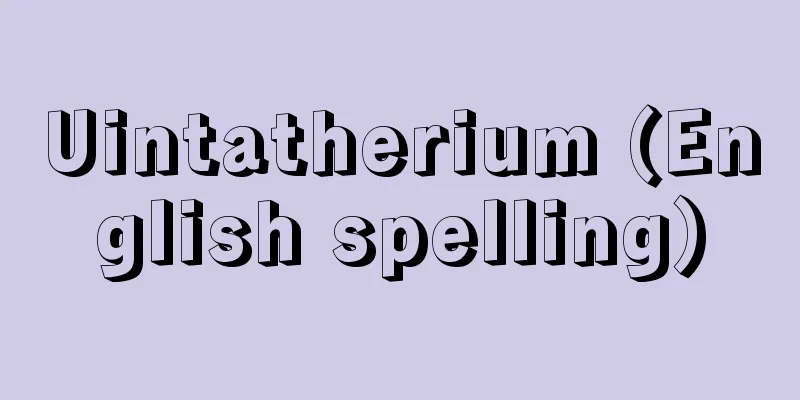Kumamoto [city] - Kumamoto
![Kumamoto [city] - Kumamoto](/upload/images/67cb6bef09c56.webp)
|
Kumamoto City is located in the center of the Kumamoto Plain in central Kumamoto Prefecture, facing Shimabara Bay. It was incorporated as a city in 1889 and is the prefectural capital. In 1607, Kato Kiyomasa completed Kumamoto Castle in the central city area, and it became a castle town. After 1632, it developed as a castle town of the Hosokawa clan, which had a fief of 540,000 koku. After the Meiji Restoration, the Chinzei Chindai was established, and it served as a military city until World War II. It has long been a key transportation hub leading to Buzen, Satsuma, Bungo, and Hyuga Kaido roads, and is served by the Kyushu Shinkansen, Kagoshima Main Line, Toyohashi Main Line, Kumamoto Electric Railway, Kyushu Expressway, National Route 3, and Route 57 (Kyushu Transverse Highway). It has a strong consumer city character and is a thriving commercial city. In the past, there were many small and medium-sized factories that manufactured food, lumber, and agricultural equipment, but since the late 1960s, large IC factories have been established in Kumamoto, and it is now a representative IC production city in Kyushu, known as Silicon Island, and forms the core of the Kumamoto Technopolis. Specialties include Higo inlay and mustard lotus root. In rural areas, in addition to rice, vegetables and flowers are cultivated, and the area is shifting to urban agriculture. Livestock is also raised. Kumamoto University, Suizenji Jojuen Garden, Honmyoji Temple where Kato Kiyomasa's mausoleum is located, the birthplace of Suizenji nori (a natural monument), and the decorated ancient tomb of Senkinko (a historic site) are some of the areas. In 1991, Kitabu Town, Kawachi Town, Akita Town, and Tenmei Town were incorporated, in October 2008, Tomiai Town of Shimomashiki District, and in March 2010, Jonan Town of Shimomashiki District and Ueki Town of Kamoto District were incorporated. In April 2012, the city became a designated city. The following wards were established: Chuo, Higashi, Nishi, Minami, and Kita. Area: 390.32 km2 . Population: 734,474 (2010). → Related topics Kawachi (Kumamoto) | Kumamoto [Prefecture] | Kumamoto University Source : Heibonsha Encyclopedia About MyPedia Information |
|
熊本県中部,熊本平野の中央にあり島原湾に面する市。1889年市制。県庁所在地。中心市街は1607年加藤清正が熊本城を完成,城下町となった。1632年以後は細川氏54万石の城下町として発展。明治維新後鎮西鎮台が置かれ,軍都として第2次大戦に及んだ。古くから豊前(ぶぜん),薩摩,豊後(ぶんご),日向(ひゅうが)街道へ通じる交通要地で,九州新幹線,鹿児島本線,豊肥本線,熊本電鉄,九州自動車道,国道3号線,57号線(九州横断道路)が通じる。消費都市的性格が強く商業が盛ん。工業はかつては中小工場が多く,食品,製材,農機具製造などを行う程度であったが,1960年代末から大手のIC工場が立地しはじめ,現在はシリコン・アイランド九州を代表するIC生産都市となり,熊本テクノポリスの中核を形成する。肥後象嵌(ぞうがん),辛子レンコンなどを特産。農村部では米作のほか野菜,花卉(かき)などを栽培し,都市型農業へと転換しつつある。畜産も行う。熊本大学,水前寺成趣園,加藤清正廟のある本妙寺,スイゼンジノリ発生地(天然記念物),装飾古墳の千金甲(せごんこう)古墳(史跡)などがある。1991年,北部町,河内町,飽田町,天明町を,2008年10月下益城郡富合町を,2010年3月下益城郡城南町,鹿本郡植木町を編入。2012年4月,政令指定都市に移行。中央区,東区,西区,南区,北区を設置。390.32km2。73万4474人(2010)。 →関連項目河内(熊本)|熊本[県]|熊本大学 出典 株式会社平凡社百科事典マイペディアについて 情報 |
>>: Kumamoto Prefecture - Kumamoto
Recommend
Herschel, Sir John Frederick William
Born: March 7, 1792, Slough [Died] May 11, 1871. C...
Irish coffee (English spelling)
A type of cocktail. Irish whiskey, sugar, and hot...
Cryptanthus zonatus (English spelling) Cryptanthuszonatus
… [Takabayashi Masatoshi]. … *Some of the termino...
Guillaume de Volpiano (English spelling) Guillaume de Volpiano
…Composer Rameau, sculptor Ludes, and architect E...
Atisha - Atisha (English spelling)
Indian thinker and religious leader. Also known a...
Shiba Zenkou
A comic writer from the late Edo period. His real...
Likembe
...It is also common to play the instrument by pl...
Emperor Kasuganomiya
?-716 Asuka - A retired emperor of the Nara perio...
Cortinarius
...Mushrooms of the genus Cortinarius in the fami...
Crying woman - Nakionna
〘 noun 〙 A woman who ceremonially cries at funeral...
Puy‐de‐Dôme (mountain)
The highest peak of the Dôme massif at the norther...
file system
A method of managing and storing data on auxiliary...
Gachagacha - Clacka
→ Shoeworm Source : Heibonsha Encyclopedia About M...
Araujia sericofera Brot.
An evergreen climbing shrub of the Asclepiadaceae ...
Sunpu
The location of the Suruga Kokufu, which was loca...









